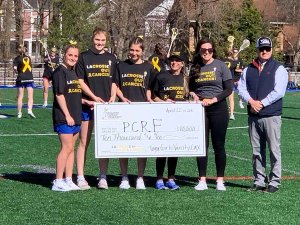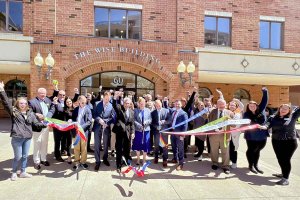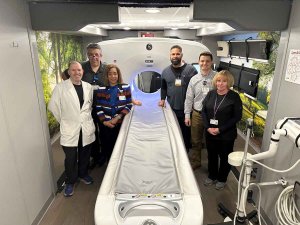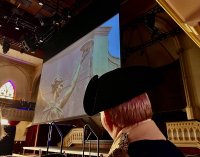If you joined me in my last article, we had an overview of the four principles of fitness and how they interact with each other. The principles are seen whether we move around in everyday life, work out, or perform sports. Today, we’re going to dive into stability and what it means to you.
Let’s start by taking a short trip back to our classroom days and review a bit of neuroanatomy. Hang with me, and try to stay awake!
Our neuromuscular system is not just tendons, ligaments, joints, muscles, and bones that move us. It also includes a complex matrix comprising the brain, nerves, vision, inner ear, sensors, and multiple systems that work to keep us moving and upright.
You may remember the cerebellum during human anatomy in health class. At least you have heard of it. Well, It is the part of our brain next to the brainstem that controls movement. The cerebellum makes up only 10% of our brain’s size but holds over half of the total neurons in the human brain. It is responsible for maintaining and balancing posture, coordinates voluntary movements, and is also involved in language. While all of these functions are vitally important, the cerebellum’s ability to adapt, fine-tune, and ‘motor learn’ through experience directly relates to the fitness principle of stability.
Stability has a wide variety of definitions for human movement and function, depending on who you ask. I will define it as ‘our body’s ability to control a movement at or into a specific position.’ Our cerebellum does this without us thinking about it. Balance and stability are two separate things, but stability plays a significant role in balance. If we fail to stabilize our body or joints, whether moving or trying to stay still while resisting forces, movement dysfunctions, poor performance, or injury may occur.
Are you a high school athlete, master’s golfer, avid gardener, playful grandparent, or a hard-working warehouse worker? As we age, play, compete, work and live, we develop movement patterns that we gravitate towards and patterns that we avoid. Different components of stability are required within each of our daily lives. Athletes need a stable trunk and legs to cut from, jump onto, and resist being pushed by other players during competitions. Workers require the ability to coordinate reaching, lifting, bending, and carrying objects while looking where they are going. Walkers of all ages must coordinate walking, stepping over objects, looking around, and navigating terrains that aren’t always smooth.
So how do we train stability? How do we make it better?
Let’s focus on “global stability,” meaning our entire body works on remaining stable instead of a “joint by joint” approach. Remember, we are not individual body parts; we are whole people!
There are two main ways to challenge your stability. First, change your base of support (one foot, narrow feet.) Second, move your center of mass (reaching for something, leaning forward, carrying a weight on one side of your body.) Remember, to allow the cerebellum to ‘motor learn,’ we must challenge ourselves with new movements and unstable positions/loads. Frequency is key; the more we practice, the more precise we get.
There are infinite ways to sharpen your stability at home. I’ll review a few simple ways below. And remember, if these movements are new to you, they may be challenging.
1. Single Leg Balance
Stand tall with one foot in front of a counter or next to a wall. If needed, hold on to the wall or a sturdy piece of furniture for balance. Make sure you keep your knee slightly bent with the leg you’re standing on. If this is too challenging, standing with both feet on the ground with your feet touching each other. If you can stand on one leg for 30 seconds, try closing your eyes. If you’re looking for a different challenge, open your eyes and add turning your head left and right. You can even add standing on one leg to any upper body exercises you perform to challenge yourself. To sharpen your stability, you need to expose yourself to unfamiliar movements and situations.
2. Farmer Carries
Because life doesn’t always function while standing in one place, let’s move around a bit with this next one. Find a heavyweight or fill a bag with objects. The weight should feel like it is trying to pull you over. Start by staying nice and tall and not leaning to one side or the other. Begin walking slowly down the hallway while maintaining an upright posture. If this seems a bit easy, start marching, raising the knee to your waist height, holding each step for 3 seconds. Keep holding onto the weight without leaning!
3. Rotary Stability
Let’s look at the trunk and shoulders’ abilities to resist unstable forces. Start in a crawling position, on all fours. Bring your knees closer together, as well as your hands, creating a narrow base of support. Next, try to reach out in front of you with one arm and kick behind you with the opposite leg. Try to maintain this balanced position for 20 seconds. Repeat on the other side. Add a small weight into one of your hands or add head turns to make this more challenging. If you are looking to simplify this exercise, widen your support base back to the crawling position. Start with 3 sets of 20 seconds each.
4. Uneven Terrain Walking
Many of us spend a good deal of time walking, whether for our daily routine, exercise, or meditation. I would argue most of us stick to flat terrain or groomed trails. You can challenge your ability to move and adapt to new situations by walking on grass, gravel, rocks, and other non-flat surfaces. You may want to use a pair of hiking poles at first to expand your base of support. Walking to various music beats (rhythmically timed gait) can help develop new gait patterns and work on coordination and timing, also great for individuals with Parkinson’s.
Training the “fitness foundation” of stability helps sharpen your ability to adapt to new situations, react to new movements, and help maintain your balance when posed with an unpredictable environment. These things are a vital component of long-term fitness and living a fulfilling, active life. In the following three articles, we will be looking at mobility, power, and strength and how you can participate and improve in each area!
Dr. Robert Rehberger PT, DPT, OCS is a physical therapist at Goodemote Physical Therapy, serving Saratoga Springs and surrounding communities. He is a Board-Certified Orthopedic Specialist and has completed a Board-Certified Spine Fellowship in Ithaca, NY. He also serves as a wellness, fitness, and strength coach on a private basis.
At Goodemote PT, we work with individuals recovering from injury to help improve their quality of life and fitness. If you have any questions, call 518-306-6894 to set up an appointment or find us at GoodemotePT.com. Dr. Robert Rehberger can be reached at This email address is being protected from spambots. You need JavaScript enabled to view it.






























 How to resolve AdBlock issue?
How to resolve AdBlock issue? 









